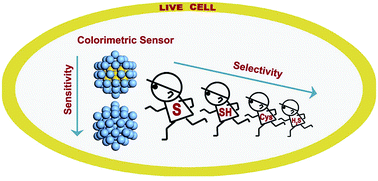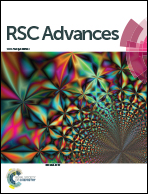Highly sensitive and selective colorimetric detection of sulphide using Ag–Au nanoalloys: a DFT study
Abstract
A density functional theory approach is applied to investigate the sensing mechanism for the colorimetric detection of sulphide (S) among sulphide species, such as S, SH, cysteine (Cys), and H2S, using Ag–Au nanoalloys. By exploring the adsorption of sulphide species on the Ag42Au13 and Ag55 clusters, it is found that the adsorption strength of those sulphide species on the Ag42Au13 cluster is stronger than those on the Ag55 cluster, corresponding to the higher sensitivity of the Ag42Au13 cluster compared with the Ag55 one for the colorimetric detection of sulphide species. In addition, it is found that the adsorption strength of the Ag42Au13 and Ag55 clusters towards sulphide species follows the order of S > SH > Cys > H2S, indicating that both the Ag42Au13 and Ag55 clusters possess high selectivity for the colorimetric detection of S over other sulphide species. By investigating the coverage effect of S on the Ag42Au13 cluster, it is found that increasing the coverage of S leads to the decrease of the adsorption strength. Our theoretical results are expected to provide new guidelines for rational design of more powerful adsorption-based colorimetric sensors for detecting S using Ag–Au nanoalloys.


 Please wait while we load your content...
Please wait while we load your content...